- Home
- Walter Scott
Ivanhoe (Barnes & Noble Classics Series)
Ivanhoe (Barnes & Noble Classics Series) Read online
Table of Contents
From the Pages of Ivanhoe
Title Page
Copyright Page
Sir Walter Scott
The World of Sir Walter Scott and Ivanhoe
Introduction
Author’s Introduction
Dedicatory Epistle to The Rev. Dr. Dryasdust, F.A.S.
CHAPTER I
CHAPTER II
CHAPTER III
CHAPTER IV
CHAPTER V
CHAPTER VI
CHAPTER VII
CHAPTER VIII
CHAPTER IX
CHAPTER X
CHAPTER XI
CHAPTER XII
CHAPTER XIII
CHAPTER XIV
CHAPTER XV
CHAPTER XVI
CHAPTER XVII
CHAPTER XVIII
CHAPTER XIX
CHAPTER XX
CHAPTER XXI
CHAPTER XXII
CHAPTER XXIII
CHAPTER XXIV
CHAPTER XXV
CHAPTER XXVI
CHAPTER XXVII
CHAPTER XXVIII
CHAPTER XXIX
CHAPTER XXX
CHAPTER XXXI
CHAPTER XXXII
CHAPTER XXXIII
CHAPTER XXXIV
CHAPTER XXXV
CHAPTER XXXVI
CHAPTER XXXVII
CHAPTER XXXVIII
CHAPTER XXXIX
CHAPTER XL
CHAPTER XLI
CHAPTER XLII
CHAPTER XLIII
CHAPTER XLIV
Endnotes
Inspired by Sir Walter Scott and Ivanhoe
Comments & Questions
For Further Reading
From the Pages of
Ivanhoe
The date of our story refers to a period towards the end of the reign of Richard I., when his return from his long captivity had become an event rather wished than hoped for by his despairing subjects, who were in the meantime subjected to every species of subordinate oppression. (page 27)
“When the Knight of Ivanhoe comes within the four seas of Britain, he underlies the challenge of Brian de Bois-Guilbert, which, if he answer not, I will proclaim him as a coward on the walls of every Temple court in Europe.” (page 68)
The trumpets instantly sounded, while the heralds proclaimed the Lady Rowena the Queen of Beauty and of Love for the ensuing day, menacing with suitable penalties those who should be disobedient to her authority. (page 113)
He could not bring himself to acknowledge, in presence of such an assembly, the son whom he had renounced and disinherited.
(page 183)
Cedric, the instant that an enemy appeared, launched at him his remaining javelin, which, taking better effect than that which he had hurled at Fangs, nailed the man against an oak-tree that happened to be close behind him. Thus far successful, Cedric spurred his horse against a second, drawing his sword at the same time, and striking with such an inconsiderate fury that his weapon encountered a thick branch which hung over him, and he was disarmed by the violence of his own blow. (page 194)
“One foot nearer, and I plunge myself from the precipice; my body shall be crushed out of the very form of humanity upon the stones of that courtyard ere it become the victim of thy brutality!” (pages 235-236)
A moment of peril is often also a moment of open-hearted kindness and affection. We are thrown off our guard by the general agitation of our feelings, and betray the intensity of those which, at more tranquil periods, our prudence at least conceals, if it cannot altogether suppress them. (page 284)
“The castle burns,” said Rebecca—“it burns! What can we do to save ourselves?” (page 309)
“You are safe if you renounce Rebecca. You are pitied—the victim of magical delusion. She is a sorceress, and must suffer as such.” (page 367)
“Death is the least of my apprehensions in this den of evil.”
(page 394)
His opponents, desperate as they were, bore back from an arm which carried death in every blow. (page 415)
“Know me under the name which, I fear, fame hath blown too widely not to have reached even your royal ears: I am Robin Hood of Sherwood Forest.” (page 418)
Even in our own days, when morals are better understood, an execution, a bruising-match, a riot, or a meeting of radical reformers, collects, at considerable hazard to themselves, immense crowds of spectators. (page 443)
The flush passed from his brow, and gave way to the pallid hue of death. Unscathed by the lance of his enemy, he had died a victim to the violence of his own contending passions.
(pages 453-454)
These distinguished nuptials were celebrated by the attendance of high-born Normans, as well as Saxons, joined with the universal jubilee of the lower orders, that marked the marriage of two individuals as a pledge of the future peace and harmony betwixt two races, which, since that period, have been so mingled that the distinction has become wholly invisible. (page 461)
BARNES & NOBLE CLASSICS
NEW YORK
Published by Barnes & Noble Books
122 Fifth Avenue
New York, NY 10011
www.barnesandnoble.com/classics
Ivanhoe was first published in 1819.
Published in 2005 by Barnes & Noble Classics with new Introduction,
Notes, Biography, Chronology, Inspired By, Comments & Questions,
and For Further Reading.
Introduction, Notes, and For Further Reading
Copyright © 2005 by Gillen D’Arcy Wood.
Note on Sir Walter Scott, The World of Sir Walter Scott and Ivanhoe,
and Inspired by Sir Walter Scott and Ivanhoe, and Comments & Questions
Copyright © 2005 by Barnes & Noble, Inc.
All rights reserved. No part of this publication may be reproduced or
transmitted in any form or by any means, electronic or mechanical,
including photocopy, recording, or any information storage and retrieval
system, without the prior written permission of the publisher.
Barnes & Noble Classics and the Barnes & Noble Classics
colophon are trademarks of Barnes & Noble, Inc.
Ivanhoe
ISBN-10: 1-59308-246-0
ISBN-13: 978-1-59308-246-0
eISBN : 978-1-411-43242-0
LC Control Number 2005920890
Produced and published in conjunction with:
Fine Creative Media, Inc.
322 Eighth Avenue
New York, NY 10001
Michael J. Fine, President and Publisher
Printed in the United States of America
QM
3 5 7 9 10 8 6 4 2
Sir Walter Scott
The creator of the historical novel and one of the most popular writers of his era, Sir Walter Scott was born in Edinburgh, Scotland, on August 15, 1771. During his lifetime, Scott witnessed industrialization and worker rebellions, revolution and the Napoleonic wars. He saw Scotland rise from a fragmented backwater to become a sophisticated cultural center. His literary works consolidated national pride and materially contributed to Scotland’s cultural development. Despite the fascinating movements and upheavals of his own time, Scott found his true glory in the strife and striving of earlier eras. Inspired in his youth by ballads of his ancestors and their Border Wars with England, Scott spent his life looking to history to illuminate the present. Indeed, most of his works—including his greatest, and best-selling, novels such as Ivanhoe and Rob Roy—offer compelling images of times past.
As a solicitor and a writer to the signet, Scott’s father was well acqua
inted with land disputes among residents along the England-Scotland border that persisted well into the nineteenth century. His son experienced this storied area firsthand. After contracting polio when he was two years old, Walter was sent to his grandparents’ house in Sandy Knowe in the Border region to convalesce. There he developed a love of literature, gilded by his grandmother’s stories about the area. Permanently lamed but well enough to walk with a cane, Scott attended the High School in Edinburgh, where, along with the traditional ballads he loved, he favored the works of Shakespeare, Spenser, and Italian poet Ludovico Ariosto. Popular and intellectually promising, Scott studied the classics and law at Edinburgh University.
Although he worked throughout his life as an advocate and later as principal clerk to the Court of Session, Scott’s literary ambitions surfaced early in the form of ardent love poetry. He also developed a passion for collecting ballads; in 1802 he published a compendium, The Minstrelsy of the Scottish Border. He also wrote tremendously popular narrative poems, including The Lay of the Last Minstrel (1805) and The Lady of the Lake (1810).
During the second decade of the nineteenth century, Scott was offered the position of poet laureate, which he declined, and a baronetcy, which he accepted. Although his fame was assured by the popularity of his poems, he chose to publish his novels under a pseudonym—perhaps uncertain how they would be received. In 1814 the anonymously published Waverley sold out the entire first run in a matter of days. Critics and readers alike loved Scott’s historical romances; his subsequent novels, such as Guy Mannering (1815), Rob Roy (1817), and his master-piece, Ivanhoe (1819), set sales records and sparked fervent speculation about their authorship. Scott did not reveal that he had written the novels until 1827.
Sir Walter Scott was at the apex of his powers in the early 1820s, when he published one or more works each year; he entertained King George IV in Edinburgh and received honorary degrees from Oxford and Cambridge. He had made a fortune publishing his work through a company he owned with childhood friend James Ballantyne, but even Scott was not immune to the recession that gripped Britain in 1825. By the end of 1826 he had lost everything, his wife had died, and his health was failing. Determined not to declare bankruptcy, Scott pledged the future earnings of his writings to pay off his debts. In addition to burdensome hack work he took to increase his income, he wrote at least one book a year, including Woodstock (1826), Life of Napoleon Buonaparte (1827), and The Fair Maid of Perth (1828). At work on a complete collection of his writings, Scott had a stroke in 1831 and died on September 21, 1832, at his Scottish estate, Abbotsford.
The World of Sir Walter Scott and Ivanhoe
1771 Walter Scott is born in Edinburgh on August 15, the fourth surviving child of Walter and Anne Rutherford Scott. His father is a writer to the signet (a judicial officer responsible for preparing warrants, writs, and other documents) , the most distinguished position a solicitor can hold in Scotland, and one for which Walter, Jr., will one day apprentice. Anne Scott, whose warrior ancestors figure in Scottish clan lore, regales her children with the oral history of the family, instilling in young Walter a love of traditional ballads. The Encyclopaedia Britannica, founded in 1768 in Edinburgh, completes its first, threevolume edition.
1773 Walter contracts polio, and his right leg is left permanently lame. Hoping to improve his health, his parents send him to live for several years with his grandparents at Sandy Knowe in the Border region. Walter’s gregarious grandmother Barbara entertains him with tales of EnglishScottish border wars, many featuring legendary figures from the family. His doting Aunt Jenny, another caretaker , introduces him to literature and inspires in him a lifelong love of storytelling. Walter’s health improves, but he must use a cane to walk.
1775 The American Revolution begins.
1776 The American Declaration of Independence is written. Adam Smith publishes The Wealth of Nations.
1778 Walter returns home to a new family house in Edinburgh’s George Square.
1779 The family enrolls Walter in the High School in Edinburgh . A keen student undaunted by his physical disability , he is well liked by his classmates. He becomes a
bibliophile, devouring the works of Shakespeare, Edmund Spenser, Ludovico Ariosto, Henry Fielding, and Tobias Smollett.
1783 Walter spends another recuperative year with his Aunt Jenny in Kelso. While studying to enter university, Scott is thrilled to discover Reliques of Ancient English Poetry, a book of traditional ballads collected by Bishop Thomas Percy; the compendium will influence Scott’s collection The Minstrelsy of the Scottish Border (1802-1803). At age twelve, he enrolls in Edinburgh University to study the classics.
1784 Walter’s poor health requires him to recuperate in Kelso for a year, after which he resumes his studies.
1786 Scott takes a position in his father’s firm; as a young apprentice , he travels to the Highlands on company business and is captivated by the area’s landscape and lore. Back in Edinburgh, he frequents literary salons and reads the works of French and Italian authors. Robert Burns, whom Scott meets briefly, publishes Poems, Chiefly in the Scottish Dialect.
1788 George III suffers his second bout of mental illness.
1789 Scott foregoes the profession of writer to the signet in favor of studying for the bar at Edinburgh University, where he also forms a poetry society. The French Revolution begins. William Blake’s Songs of Innocence is published.
1790 Edmund Burke writes Reflections on the Revolution in France. Scott falls passionately in love with Williamina Belches, the daughter of an aristocrat and advocate, Sir John Belches; her higher social position makes marriage unlikely.
1791 Thomas Paine publishes The Rights of Man.
1792 After passing his exams, Scott is admitted to the bar as an advocate and begins working in the provinces; he will draw heavily on this work for his 1824 novel Redgauntlet. He begins collecting love ballads that he will compile in later works. The works of Johann Wolfgang von Goethe and Gottfried August Burger spark Scott’s interest in German poems and literature.
1793 King Louis XVI is executed in France; the Reign of Terror begins.
1796 Scott is crushed to discover that Williamina Belches is engaged to another, much wealthier man.
1797 While on a visit to the Lake District, Scott meets Frenchborn Margaret Charlotte Charpentier. After a few weeks, Scott and Charlotte become engaged; they marry on December 24. His first publications, translations of Burger’s The Chase and William and Helen, appear anonymously. He publishes a translation of Goethe’s play Götz von Berlichingen that is not well received.
1798 Charlotte and Scott rent a house on Castle Street in Edinburgh . Based on the quality of his Burger translations, Scott is asked to contribute to an anthology of poetry, Tales of Terror, that will be published in 1800. William Wordsworth and Samuel Taylor Coleridge publish Lyrical Ballads.
1799 The first of the Scotts’ five children, a daughter, is born. Scott secures a steady living when he becomes sheriffdeputy of Selkirkshire, a position he will hold throughout his life.
1801 The anthology Tales of Wonder, which contains Scott’s “Glenfinlas” and “The Eve of Saint John,” is published. The Scott family moves to 39 Castle Street in Edinburgh.
1802- The Minstrelsy of the Scottish Border, a collection of poems
1803 based on traditional ballads, is published in three volumes.
1804 The Scott family moves to a country house in Ashestiel; the poet Wordsworth pays a visit. Napoleon is crowned emperor of the French.
1805 The long narrative poem The Lay of the Last Minstrel is published to overwhelming popularity. Scott edits the works of Dryden, with a biography as preface.
1806 Scott is made principal clerk to the Court of Session in Edinburgh. Ballads and Lyrical Pieces is published.
1808 The poetic romance Marmion, another successful work, is published.
1809 Scott helps found the Tory Quarterly Review. He and his old friend James Ballantyne form a printing company.
Encyclopaedia Britannica publishes Scott’s essays “Chivalry,” “Romance,” and “Drama” as part of the fourth edition (1801-1809).
1810 The Lady of the Lake is published to phenomenal book sales.
1811 The Scott family buys Clarty Hole Farm with plans to build a castle called Abbotsford. George III is declared insane , and the morally suspect Prince of Wales becomes regent.
1812 Napoleon withdraws from Moscow.
1813 Scott declines the position of poet laureate. The printing company he formed with Ballantyne collapses and is purchased by Constable and Company. Facing extreme financial duress, Scott is aided by his friend the Duke of Buccleuch. Jane Austen’s Pride and Prejudice is published.
1814 Napoleon abdicates, and the French monarchy is reinstated. The novel Waverley, published anonymously, is another great success. Scott continues to publish all his novels anonymously under various noms de plume, including “Jedediah Cleishbotham.”
1815 Guy Mannering; or, The Astrologer and The Lord of the Isles are published. Scott visits the Waterloo battlefield.
1816 Paul’s Letters to his Kinsfolk, The Antiquary, and Tales of My Landlord (first series, including The Black Dwarf and Old Mortality) are published.
1817 Rob Roy is published. William Hazlitt’s Characters in Shakespeare’s Plays is published.

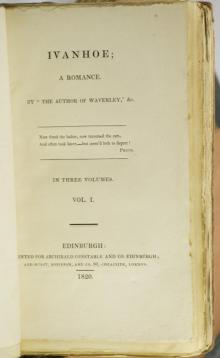 Ivanhoe: A Romance
Ivanhoe: A Romance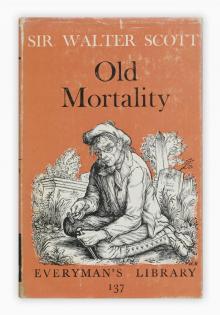 Old Mortality, Complete
Old Mortality, Complete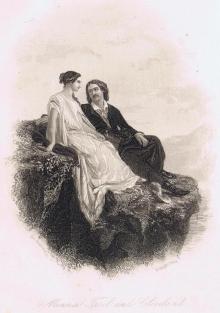 The Pirate
The Pirate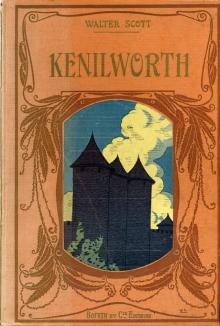 Kenilworth
Kenilworth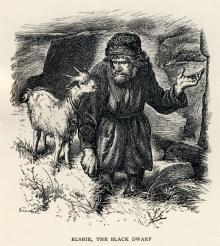 The Black Dwarf
The Black Dwarf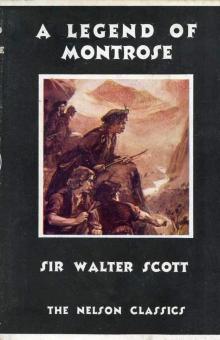 A Legend of Montrose
A Legend of Montrose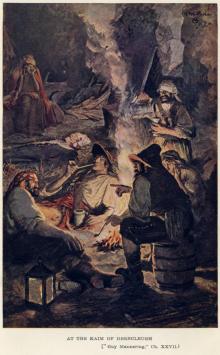 The Monastery
The Monastery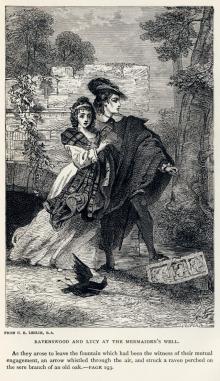 The Bride of Lammermoor
The Bride of Lammermoor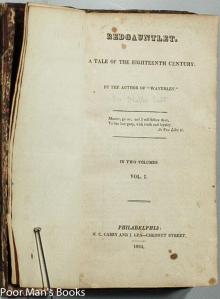 Redgauntlet: A Tale Of The Eighteenth Century
Redgauntlet: A Tale Of The Eighteenth Century St. Ronan's Well
St. Ronan's Well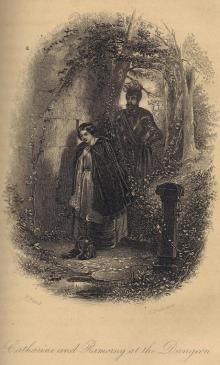 The Fair Maid of Perth; Or, St. Valentine's Day
The Fair Maid of Perth; Or, St. Valentine's Day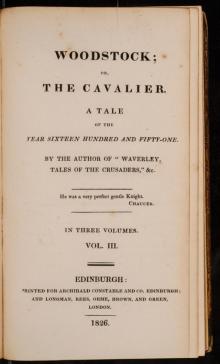 Woodstock; or, the Cavalier
Woodstock; or, the Cavalier_preview.jpg) Anne of Geierstein; Or, The Maiden of the Mist. Volume 1 (of 2)
Anne of Geierstein; Or, The Maiden of the Mist. Volume 1 (of 2)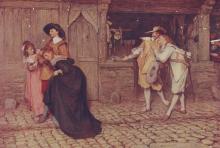 Peveril of the Peak
Peveril of the Peak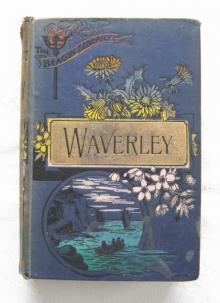 Waverley; Or, 'Tis Sixty Years Since
Waverley; Or, 'Tis Sixty Years Since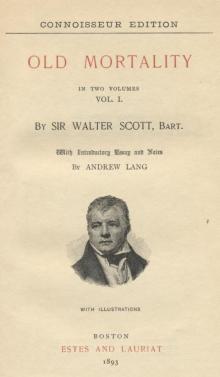 Old Mortality, Volume 1.
Old Mortality, Volume 1.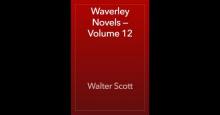 Waverley Novels — Volume 12
Waverley Novels — Volume 12 The Heart of Mid-Lothian, Complete
The Heart of Mid-Lothian, Complete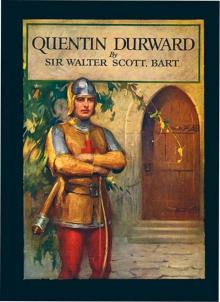 Quentin Durward
Quentin Durward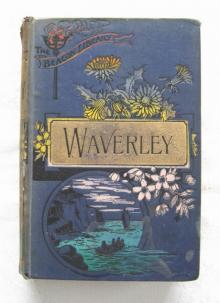 Waverley; Or 'Tis Sixty Years Since — Complete
Waverley; Or 'Tis Sixty Years Since — Complete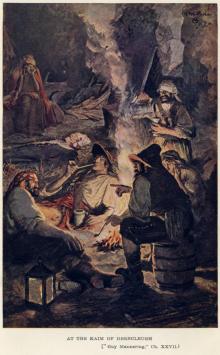 Guy Mannering; or, The Astrologer — Complete
Guy Mannering; or, The Astrologer — Complete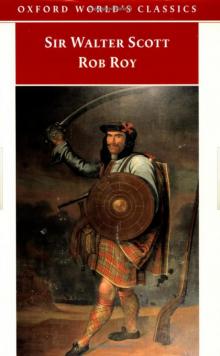 Rob Roy — Complete
Rob Roy — Complete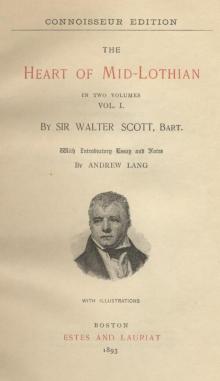 The Heart of Mid-Lothian, Volume 2
The Heart of Mid-Lothian, Volume 2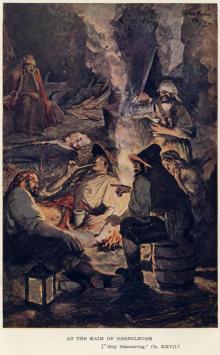 Guy Mannering, Or, the Astrologer — Complete
Guy Mannering, Or, the Astrologer — Complete_preview.jpg) Anne of Geierstein; Or, The Maiden of the Mist. Volume 2 (of 2)
Anne of Geierstein; Or, The Maiden of the Mist. Volume 2 (of 2)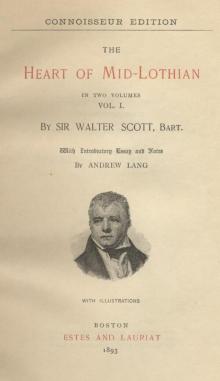 The Heart of Mid-Lothian, Volume 1
The Heart of Mid-Lothian, Volume 1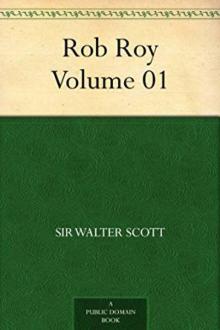 Rob Roy — Volume 01
Rob Roy — Volume 01 Waverley; Or, 'Tis Sixty Years Since — Volume 2
Waverley; Or, 'Tis Sixty Years Since — Volume 2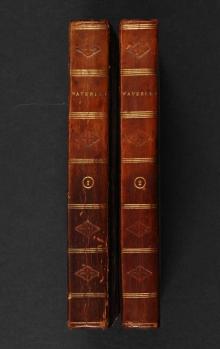 Waverley; Or, 'Tis Sixty Years Since — Volume 1
Waverley; Or, 'Tis Sixty Years Since — Volume 1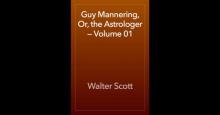 Guy Mannering, Or, the Astrologer — Volume 01
Guy Mannering, Or, the Astrologer — Volume 01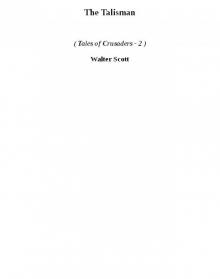 The Talisman toc-2
The Talisman toc-2 Rob Roy
Rob Roy Old Mortality, Volume 2.
Old Mortality, Volume 2. The Betrothed
The Betrothed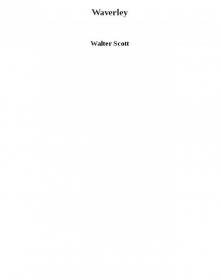 Waverley
Waverley The Surgeon's Daughter
The Surgeon's Daughter Ivanhoe (Barnes & Noble Classics Series)
Ivanhoe (Barnes & Noble Classics Series) The Antiquary
The Antiquary Letters on Demonology and Witchcraft
Letters on Demonology and Witchcraft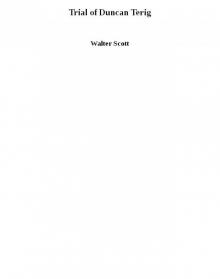 Trial of Duncan Terig
Trial of Duncan Terig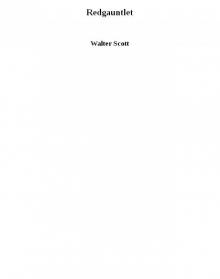 Redgauntlet
Redgauntlet My Aunt Margaret's Mirror
My Aunt Margaret's Mirror Guy Mannering or The Astrologer
Guy Mannering or The Astrologer Marmion
Marmion The Tapestried Chamber, and Death of the Laird's Jock
The Tapestried Chamber, and Death of the Laird's Jock Chronicles of the Canongate
Chronicles of the Canongate The Fair Maid of Perth or St. Valentine's Day
The Fair Maid of Perth or St. Valentine's Day The Heart of Mid-Lothian
The Heart of Mid-Lothian Lady of the Lake
Lady of the Lake